Beverly Gray's Blog: Beverly in Movieland, page 68
April 26, 2019
Charles Van Doren in Jeopardy, and Other Quiz Show Tales
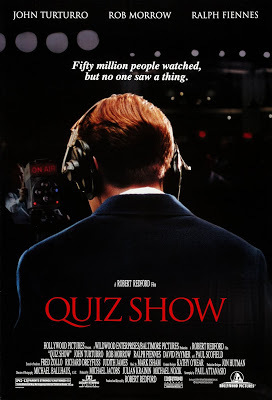
If you’re a Jeopardy fan, you already know there’s a new champion around, one who may give the fabled Ken Jennings a run for his money. Publications are currently chock-full of stories about James Holzhauer, a contestant who’s as strategic as he is smart about obscure factoids. The Atlantic.com, for one, has issued a series of breathless updates regarding his meteoric rise: “On an episode of Jeopardythat aired Tuesday evening, James Holzhauer became the fastest-ever contestant on the show to to earn $1 million in prize money.” And so on.
I can’t pretend I’m a serious fan of quiz shows. But I can remember back to when the brand-new medium of television was full of shows like “The $64,000 Question” (cash awards have gone up considerably since then!) and “Tic-Tac-Dough.” TV was live back in the day, and it seemed as though the whole nation tuned in to watch. Of course we were fans of contestants with appealing personalities, and some of them became media stars. There was, for instance, that Italian immigrant shoemaker, Gino Prato, who answered questions about opera. And a smartly-dressed young psychologist, Dr. Joyce Brothers, who chose boxing as her unlikely topic area and became the first woman ever to win the $64,000 top prize. (Word is that sponsor Charles Revson, who founded the Revlon cosmetic line, disliked Brothers and some other contestants, and tried hard to maneuver them into losing.)
The fun of that early quiz show era came to a dramatic halt in 1958, when rumors began circulating that the various contests were rigged. When I recently read about the death of Charles Van Doren at the age of 93, it all came back to me. Among trivia nerds, Van Doren seemed to be a golden boy. Handsome and sophisticated, he was an English instructor at Columbia University. And his family tree was impeccable. Father was Mark Van Doren, a Columbia professor and winner of a Pulitzer Prize for his poetry. Mother Dorothy was a writer and editor. His father’s brother, Carl Van Doren, was a noted literary historian who won his own Pulitzer for a biography of Benjamin Franklin. I suspect old Ben might have been amused (or maybe saddened?) by Charles Van Doren’s fall from grace.
It seems that a show called Twenty-One, which launched in 1956, pitted two contestants against each other. The show (sponsored by Geritol, which solved the problem of “tired blood”) at first played it straight, but no one wanted to watch. That’s when the producers hit on a new strategy. According to what I’ve read, “Twenty-One was not merely ‘fixed,’ it was almost completely choreographed. Contestants were cast almost as if they were actors, and in fact were active and (usually) willing partners in the deception. They were given instruction as to how to dress, what to say to the host, when to say it, what questions to answer, what questions to miss, even when to mop their brows in their isolation booths (which had air conditioning that could be cut off at will, to make them sweat more).” Charles Van Doren’s agonized testimony before Congress in 1959 blew the lid off the scandal. Suddenly all the fruits of his success – the money, the contracts, the marriage proposals – disappeared, and he was left with a tarnished reputation and a lot of regrets.
Sounds like the plot of a movie, doesn’t it? In 1994, Robert Redford produced and directed Quiz Show, starring Ralph Fiennes as Charles Van Doren and John Turturro as his unfairly defeated nemesis. It’s not nice to tamper with the faith of a nation.
Published on April 26, 2019 10:36
April 23, 2019
A Little Presidential Humor (on the occasional of the election in Ukraine)
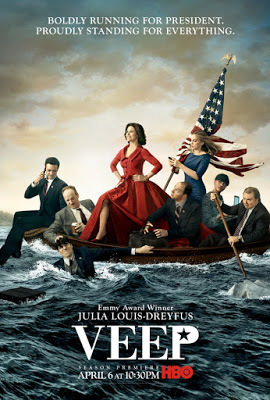
Did you hear the one about the guy who got elected president of his country because he plays the president on TV? This week it’s proving to be no joke. Ukraine’s President Petro Poroshenko (I love all that alliteration) has just been trounced by forty-one-year-old Volodymyr Zelensky. No question that the status quo in Ukraine needs some improvement. There’s a lackluster economy, charges of corruption in high places, and an ongoing feud with Putin’s Russia, which has made major inroads on Ukraine’s eastern border. So what are Zelensky’s credentials to tackle all this? Well, he’s an actor and comedian with absolutely no political experience. Zilch. Zip. But he has been awfully appealing on Servant of the People, a TV series in which he plays a high school history teacher who somehow finds himself elevated into his nation’s highest office. And what are his real-lie views? His plans? His allegiances? Well, no one exactly knows. But they like him . . . they really like him.
It’s not only citizens of Ukraine who put their faith in celebrities from other fields when it comes time to choose a political leader. Seems as though I’m always hearing about political satirists of the Jon Stewart ilk running for office in Asia and the Middle East. (They may not be able to solve things, but at least they know what the issues are.) In the U.S. there’s been a long comic tradition of humorists launching presidential campaigns. In 1928, the beloved Will Rogers campaigned on the “Anti--Bunk” ticket, vowing that if elected he would resign. In 1940, Gracie Allen (the female half of the Burns and Allen duo) toured the country announcing her mock-presidential aspirations. Asked whether as president she would recognize Russia, she apparently responded, "I don't know. I meet so many people …" And to show that she would tolerate no vice in her administration, she refused to name a running-mate.
Starting in the late 1960s, when political comedy got more serious, Pat Paulsen boosted his career by perennially running for president as the candidate of the S.T.A.G. party . (Theoretically, this stood for the Straight Talking American Government Party.) His campaign slogans included "We Can Be Decisive, Probably" and "United We Sit.” And he vowed to amend the First Amendment, requiring that all obscene and pornographic material be turned over to the president for close scrutiny.
Now I hear that Roseanne Barr is serious (or as serious as she ever gets) about running for president on the Green Party ticket, promising to eliminate taxes and currency altogether. (Instead, we’d institute the barter system.) I think it’s pretty clear she’s not going to win. But of course we’ve had Hollywood celebrities who made it all the way to the White House not so very long ago. First and foremost there was Ronald Reagan, who was an actor (and president of the Screen Actors Guild) before he became Governor of California and then a president beloved by many. And now the U.S. is led by a guy whose qualifications for the presidency included being a zillionaire real-estate tycoon and also the irascible host of a TV reality show called The Apprentice. Lots of voters seemed to conclude that firing people on TV was good practice for firing up the nation.
What of those actors who, like Volodymyr Zelensky, have played presidents? I’m talking about, for instance, Kevin Kline in Dave and Michael Douglas in The American President. And, of course, Martin Sheen in TV’s The West Wing. Should we consider electing one of them? Hey, what about Veep’s Selina Meyer?
Published on April 23, 2019 09:17
April 19, 2019
Film-Worthy Fashion at FIDM
 Costumes from the Oscar-winning "Black Panther"
Costumes from the Oscar-winning "Black Panther" They say clothes don’t make the man (or woman). But when it comes to movies, clothes DO make the character. Recently I was pleased to visit the galleries of FIDM, Downtown L.A.’s Fashion Institute of Design and Merchandising, to enjoy the 27th annual exhibit honoring the art of motion picture costume design. With the cooperation of some of Hollywood’s finest, including all five of this year’s Oscar nominees, the exhibit (which I saw in its closing weekend) turned out to be an impressive display of the costume designer’s craft.
The entryway to the exhibition was graced by a spectacular violet gown featured in the 2018 Oscar-winning film, Phantom Thread. Of course that strange, captivating film had a fashion designer as its central character, and so it made for a good place to start. Then the first exhibition hall (and probably its most spectacular) featured startlingly imaginative costumes from various fantasy films, like Aquaman and Avengers: Infinity Wars. Tights and capes for superheroes abounded. But the real stars of the hall were the wondrously crafted designs by Ruth Carter that combine sleek power images with authentic African materials and motifs. No wonder Carter won this year’s Oscar for costume design, the first-ever African-American to triumph in this category.
In a room dedicated to movies set in the present, a wall plaque explained the challenge of designing clothes that are stylishly up-to-date but not so tied to the fads of any one year that they’ll look outmoded when the film is released. Examples on display came from such modish movies as Oceans Eight and Crazy Rich Asians. A video showed urbane director Paul Feig instructing actress Blake Lively (who plays a sinister rich bitch) how to strut impressively with a walking stick that features in the movie’s plot.
The show’s next room was devoted to costumes that reflect Americana: everything from the simple prairie dress and bonnet worn by Zoe Kazan in The Ballad of Buster Scruggs to the authentic period spacesuit in which Ryan Gosling blasted off to the moon in First Man. Then of course there were the gowns of British queens and their courtiers in films like The Favourite (another Oscar nominee) and Mary Queen of Scots. A queen of a very different sort showed up in the flamboyant outfits designed for Rami Malek, playing Queen lead singer Freddie Mercury in Bohemian Rhapsody. (I’m quite partial to the crown, cape, leather pants, and tennis shoes ensemble designed by Julian Day for this film.)
A final section highlighted the work of three-time Oscar winner Sandy Powell, In addition to The Favourite (for whose three leading actresses she created eccentric black-and-white gowns and man-tailored coat-and-britches ensembles), this British designer was responsible for the vibrant clothing worn in Mary Poppins Returns. I was especially taken with the candy-colored stripes she gave Lin-Manuel Miranda in a scene wherein he and star Emily Blunt would be photographed against an animated fantasy backdrop. Powell has been honored with Oscar statuettes for her work on Shakespeare in Love, The Aviator, and The Young Victoria. She also has eleven other nominations. In a video about her work habits and achievements, Miranda quips that she herself is a kind of Mary Poppins, able to make humble materials into magic.
While showing its love for Hollywood, FIDM is also dedicated to teaching its students about the history of fashion design. That explains its current project, which is on display in an adjacent gallery. There in fragmented form we see an elegant empire gown possibly worn by France’s Empress Josephine. The hope is to purchase it for the FIDM collection.
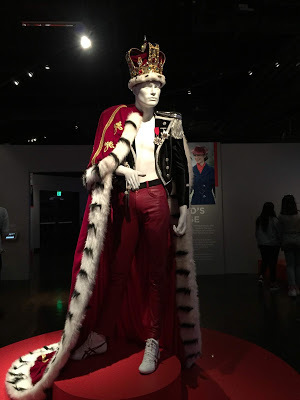 "Bohemian Rhapsody"
"Bohemian Rhapsody"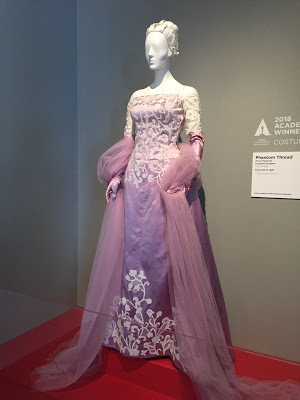 "Phantom Thread"
"Phantom Thread"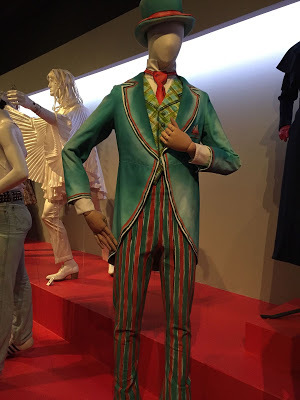 "Mary Poppins Returns"
"Mary Poppins Returns" "Black Panther"
"Black Panther"
Published on April 19, 2019 12:03
April 16, 2019
Corman, Bergman, and Bibi
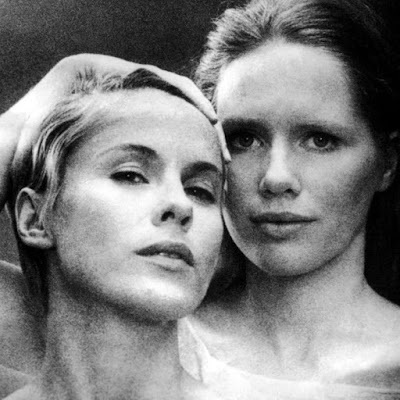 Bibi Andersson (left) in Persona, with Liv Ullmann
Bibi Andersson (left) in Persona, with Liv Ullmann As I write this, Notre Dame de Paris is burning, and I don’t quite know how to handle the loss of such an iconic place, one I first saw (and climbed) during my honeymoon. So instead I’ll focus on another, more human icon we’ve recently lost: the Swedish actress Bibi Andersson. The warm, spirited blonde was best known for her work in the films of her countryman (and sometime lover), Ingmar Bergman. She’s featured in such early Bergman classics as Wild Strawberries and The Seventh Seal, along with a rare Bergman foray into English-language filmmaking, The Touch. (In that 1971 film, which I tried hard to like, Andersson’s housewife character abandons her marriage vows for a troubled affair with a Jewish man, played by Elliott Gould, who’s haunted by the aftermath of the Holocaust. It was a box office and artistic flop.)
It’s generally agreed that Bibi Andersson’s finest performance came in an enigmatic Bergman masterpiece, Persona, where she acted opposite another of Bergman’s powerful women, Liv Ullmann. In Persona, Andersson plays a down-to-earth nurse caring for a famous actress who has mysteriously stopped speaking. As events unfold, Andersson’s Alma reveals the secrets of her own past life, and the identities of the two women seem to merge. In light of this story, it’s eerie to read of Andersson’s own later years. In 2009, at age 73, she suffered a stroke that left her unable to speak. She was confined to a nursing home for 10 years, until her death on April 14.
Though most of Andersson’s best films were made in Sweden, she occasionally took roles in Hollywood. One of the most unlikely was the part of the sympathetic therapist in Roger Corman’s 1977 screen adaptation of Joanne Greenberg’s semi-autobiographical tale of a young girl’s descent into schizophrenia, I Never Promised You a Rose Garden. The leading role was played by Kathleen Quinlan, and Gavin Lambert earned an Oscar nom for his screenplay.
What was Roger Corman doing in such distinguished company?. Going art-house! The film was made a few years after he discovered that prestige and box-office returns could be generated by distributing the art films of European masters. I was in Roger’s employ when he made a deal with Ingmar Bergman to distribute the elegant and poignant Cries and Whispers across Middle America. We on the New World staff were thrilled to work on an unusually classy ad campaign. Our excitement doubled when Cries and Whispers was honored with five Oscar nominations, including Best Screenplay, Best Director, and Best Picture. Because Bergman chose not to travel from Sweden, Roger dressed in a tux and went to the Academy Award shindig to represent him. Alas for those of us who longed to see our boss on TV, the film nabbed only one statuette, for Best Cinematography. And Bergman stalwart Sven Nykvist was on hand to collect that Oscar in person.
Buoyed by his success in distributing Bergman in North America, Roger made a deal for Federico Fellini’s Amarcord, and later had the privilege of handling masterworks by François Truffaut, Werner Herzog, Akira Kurosawa and other big names in world cinema. In 1978, he once again teamed with Ingmar Bergman (as well as Ingrid Bergman) on behalf of Autumn Sonata. It’s hard for me to picture Roger and the reclusive Swedish auteur as buddies, but Roger still prominently displays on his office wall a letter from Bergman, thanking him for introducing his work to wider American audiences than the usual art-house crowd. Bergman films in drive-ins? Only a Roger Corman would think of that.
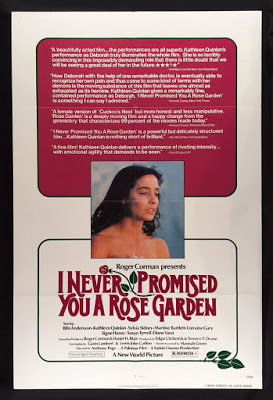
Published on April 16, 2019 12:52
April 12, 2019
TNT Jackson: For Whom Jeanne Bell Tolled
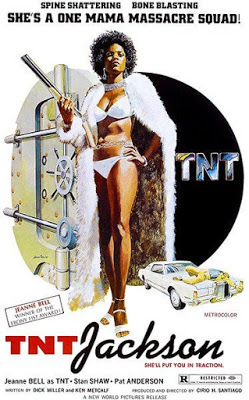 Long ago I promised tireless B-movie fan Errol Thomas that I would write about my memories of Jeanne (also known as Jeannie and Jeanie) Bell. I worked with her on the blaxploitation classic TNT Jackson, and have never forgotten the experience. TNT Jackson, of course, has a sterling exploitation film pedigree. Shot in Manila by the always audacious Cirio Santiago, it was released in 1974 through New World Pictures. Since the film got its start in the fertile brain of Roger Corman and since Roger has just celebrated birthday #93, this post can be considered a tribute to him and to the outrageous environment in which I got my very special Hollywood education.
Long ago I promised tireless B-movie fan Errol Thomas that I would write about my memories of Jeanne (also known as Jeannie and Jeanie) Bell. I worked with her on the blaxploitation classic TNT Jackson, and have never forgotten the experience. TNT Jackson, of course, has a sterling exploitation film pedigree. Shot in Manila by the always audacious Cirio Santiago, it was released in 1974 through New World Pictures. Since the film got its start in the fertile brain of Roger Corman and since Roger has just celebrated birthday #93, this post can be considered a tribute to him and to the outrageous environment in which I got my very special Hollywood education. TNT Jackson sprang out of Roger’s canny realization (in the wake of Enter the Dragon and David Carradine’s Kung Fu TV series) that a martial arts flick with a gimmick could make for a sure hit at the drive-ins. He was well aware of the box office being generated by such physically tough African-American actresses as Pam Grier (in Coffy) and Tamara Dobson (in Cleopatra Jones). Roger’s brainstorm was to propose a film featuring a sexy black chick adept at martial arts. Manila, home of Roger’s crony Cirio, would nicely stand in for Hong Kong, enhancing a story about a woman outfoxing rival “tong” gangs. There were several attempts at a suitable script, one banged out by a Corman stalwart, the late Dick Miller. (When Dick turned in a draft that Roger disliked, the two got into a fight that severed their friendship for years to come. Find details about that colorful episode in my Roger Corman: Blood-Sucking Vampires, Flesh-Eating Cockroaches, and Driller Killers ). When the screenplay was finally done, it was time to find our leading lady.
Back then, while working at New World Pictures, I moonlighted as a theatre critic. At a local playhouse, watching a drama about drug addiction, I was impressed by the performance of a young black actress. We invited her to audition for the title role of Diana (TNT) Jackson, and she was quickly cast. Then, just before she was due to fly to the Philippines, she announced that she was pregnant. Not a good sign: the part would require intense fight scenes and (since this was a Corman movie) a fair amount of nudity. On short notice, we started looking around, and came up with someone who was not much of a thespian but could boast an appearance as one of Playboy’s first African-American centerfolds. For a Roger Corman actress, this was a terrific credential. And though she hardly knew much about martial arts, Jeanne proved to be amiable and hard-working (and looked mightily impressive in a topless kung fu battle).
What I remember best about Jeanne Bell was the day she came into my office to work on some publicity material. I jotted down some notes about her background, and then she asked me how she should spell her name. Say what? It seems her real name was Annie Lee Morgan. She’d settled on a stage moniker, but wasn’t sure about the spelling. She wanted to be called Jeanie, but liked the Jeanne spelling. So she asked if that was OK. I reassured her she could spell her name any way she pleased.
So, though I liked Jeanne, I didn’t give her credit for much in the way of smarts. She was undeniably cute, however. Later that same year, she was cast in The Klansman, and Time magazine revealed to the world that she was canoodling with star Richard Burton. Who probably gave her some tips on spelling.
 Ms. Bell and Mrs. Burton, Oregon, 1974This one’s for Errol Thomas, who willed it into being
Ms. Bell and Mrs. Burton, Oregon, 1974This one’s for Errol Thomas, who willed it into being
Published on April 12, 2019 10:37
April 9, 2019
Rodgers and Hammerstein Go to the Movies
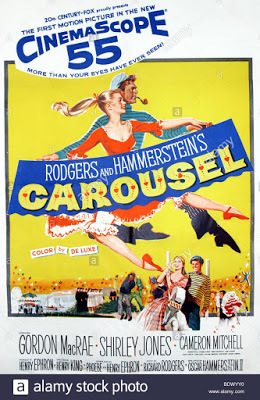
As a kid who adored musicals, whether on stage or screen, I grew up with a special affection for the 1956 movie version of Rodgers and Hammerstein’s Carousel. I loved it all: the rousing choral singing by the whalers and their gals; the romantic duet between Billy Bigelow (Gordon MacRae) and Julie Jordan (Shirley Jones); young Louise’s poignant dance on the shore. That uplifting final reprise of “You’ll Never Walk Alone” never failed to reduce me to tears.
Given my love for Carousel, I was surprised to find the film version dissed in Todd Purdum’s authoritative Something Wonderful: Rodgers and Hammerstein’s Broadway Revolution. According to Purdum, critics were universally scornful, and Carousel became the only one of Rodgers and Hammerstein’s major films not to be nominated for a single Oscar. The story of Carousel -- the tale of a ne’er-do-well carnival barker lured into a criminal act for the sake of his unborn child -- is at base a dark one, and it didn’t help that the Hollywood bosses insisted on blunting its edgy appeal in the name of propriety. Even the mildest oaths (like “what the hell”) had to be removed from the script, and the powerful moment of Billy killing himself to avoid arrest was changed in the film version into a deadly accident. Moreover, audiences were apparently not taken with the romantic duo of MacRae and Jones, because the two had already been paired the year before in the hit Todd-AO adaptation of Oklahoma! that had been nominated for four Oscars and won two.
What would Carousel have been like with Frank Sinatra in the leading role? Riding high after his dramatic tour-de-force in From Here to Eternity, Sinatra had actually signed to play Billy Bigelow, but then backed out at the very last moment. Purdum gives two possible explanations for his behavior, and I’ve heard Shirley Jones insist on a third. In her telling, Sinatra changed his mind because he lost his nerve, intimidated by the challenges of the Rodgers and Hammerstein score. Sinatra could sing, of course. But it’s surprising to learn how often Hollywood was comfortable about the idea of dubbing a star’s singing voice. For the role of Julie, producer Darryl Zanuck urged the hiring of the very lovely, very British, very non-singing Jean Simmons. And the casting process for Oklahoma! produced such unlikely ideas as Paul Newman as Curley, Richard Burton as Jud Fry, Elsa Lanchester as Aunt Eller, and Rosemary Clooney as Ado Annie. The leading lady, Laurey, could have been played by Piper Laurie, June Allyson, or Doris Day.
The King and I (also 1956) starred a non-singer, Deborah Kerr, who was nevertheless ideally suited to her role in terms of both her nationality and her image. (Marni Nixon, uncredited, provided the perfect singing voice.) But this film – for my money the best Rodgers and Hammerstein translation from stage to screen – also boasted the talents of Yul Brynner, who had burst onto the Broadway stage in the unforgettable role of the King of Siam. The beloved South Pacific should have been equally successful on film: for one thing, it was directed by Joshua Logan, who had made both Oklahoma! and Carousel into Broadway triumphs. Alas, stage directors sometimes get carried away with the possibilities of the film medium. Logan had the bright idea of using color filters in front of the camera to tint the negative in evocative colors. So when nurse Nellie Forbush (Mitzi Gaynor) sang about being a cockeyed optimist, the sky really WAS a bright canary yellow. And Bali H’ai looked positively psychedelic. What the hell?
Published on April 09, 2019 09:25
April 4, 2019
The Heat is On: A Michael Mann Crime Classic

Heat must be a good name for a movie. By my count there have been five English-language films with that exact title, starting with a 1972 flick starring and directed by protégés of Andy Warhol. Most recently we’ve had an action comedy called The Heat, featuring Sandra Bullock and Melissa McCarthy as buddy cops chasing down bad guys, while hilarity ensues.
But what I have in mind right now is a tough-minded cops-and-robbers thriller from 1995, written and directed by Michael Mann. Mann has been in Hollywood since the 1980s, making acclaimed dramatic films like The Insider and Collateral. But many of us continue to remember him for glamorizing the shores of South Beach in TV’s Miami Vice. Clearly, Mann is a guy who likes his characters to walk on the wild side. And so they do in Heat, which is set in the city of my birth, Los Angeles. Mann chose authentic locations all over downtown L.A. and the Hollywood Hills, then staged a striking climax on the tarmac of LAX. The nighttime skyline glitters; the views from stylish hilltop homes are breathtaking. Result: L.A. has never looked so dazzling, nor so dangerous.
No, I can’t pretend I caught every nuance of the complicated plot. There are lots of feints, lots of betrayals, lots of gunfire and explosions, and it’s not always clear who’s doing what to whom. Suffice it to say that the film’s two mega-stars, sharing the screen for the first time, are Al Pacino and Robert De Niro, one playing a career criminal and the other the cop who has sworn to take him down. Their few scenes together are mesmerizing: suffice it to say that, despite the fact they’re on opposite sides of the law, these two are birds of a feather. Both, that is to say, are angry land driven loners who hold a mighty grudge against the powers that be. They both recognize their kinship, and yet each is sworn to take the other one down. That’s why the last scene of the film is a doozy.
De Niro and Pacino are not the only names in Heat. There’s a major role for Val Kilmer, a thug whose love for wife Ashley Judd almost does him in. Jon Voigt plays another not-so-good guy, and a number of well-known character actors play parts on both sides of the law. It should be noted that Heat stands out for having a goodly number of developed female characters. They don’t exactly pass the Bechdel test: all of them exist in relation to their male counterparts. Still, these women (Diane Venora and Amy Brenneman in addition to Judd) are handled with admiration and respect, along with pity. (One surprise for me was the presence of a very young Natalie Portman in a small but key role as Pacino’s stepdaughter.)
The reason for the well-developed female roles speaks to the central theme of the movie. It’s voiced several times, including in this De Niro line: “A guy told me one time, ‘Don’t let yourself get attached to anything you are not willing to walk out on in thirty seconds flat if you feel the heat around the corner.’” It’s a mantra by which the central characters live—and die. In the course of the film, De Niro’s character falls hard for the nice young woman played by Amy Brenneman, to the point where his solitary days seem on the brink of being over. But the warmth of a woman’s love is no match for the heat generated by a life of crime.
Published on April 04, 2019 10:30
April 2, 2019
Surviving Eighth Grade

I’ve been slow to see Bo Burnham’s debut feature, Eighth Grade, and slower to write about it. Maybe I’ve sensed from the start that this modest film is not for everyone. My husband, for one, just didn’t get what the fuss was about. Maybe that’s because he’s male, or because he has only a dim recollection of living through those difficult middle schools years. As for me, I remember all too well the social struggles of junior high. As we matured at different rates, my “forever” elementary school pals left me behind, desperately trying to figure out where I belonged. But at least, I didn’t have to navigate the challenges of 24/7 social media: it was bad enough to throw parties to which nobody came.
The grade school years seem to hold great interest for today’s filmmakers. And why not? There was a time, back in the late Sixties, when the whole artistic focus seemed to be on the changes undergone by a young person during his or her stay at college. College was where kids left the safety of home, discovered love and social responsibility (and sex), and emerged as newly-minted adults. (See Goodbye, Columbus and Getting Straight and any number of films that took place on and around college campuses.) Later John Hughes and others explored the world from the point of view of high school students. Hughes was making movies in the Eighties, but the high school movie is still with us: see this milieu used to satiric effect in outrageously comic flicks like Mean Girls and Easy A.
We know that high school life has gotten even more complicated of late. Such big-news events as the college admissions scandal and a whole string of campus shootings (leading to the recent suicides of two Parkland students in the aftermath of last year’s tragedy) chillingly remind us that today’s high schoolers are hardly immune to the problems of the adult world. But 2017’s Lady Bird was refreshing – and highly influential to my writing students – in that it sidesteps the big public catastrophes in favor of paying close attention to one lively but confused young girl as she transitions from high school senior to college freshman . The outside world doesn’t much intrude upon her daily existence in Sacramento, California: there’s plenty of drama going on inside of her to fuel a ninety-minute story.
Eighth Grade’s heroine, Kayla Day, is a great deal younger than Christine “Lady Bird” McPherson. The film follows Kayla through her final days of middle school, just before she’s en route to high school. To show the gulf that exists between her and high school seniors like Lady Bird, the script includes a scene in which the high school kids she’s shadowing marvel that when Snapchat made its debut, Kayla was only in fifth grade. In other words, pretty much her whole life has been built around social media technology. Though she has no real-life friends, she’s constantly going through the motions of affirming her social worth via an online presence. In person she’s shy, lumpy, and basically ignored as she walks through the corridors of her school or attends a pool party where she really isn’t wanted. But on her podcast (viewed by almost no one) she’s chatty as well as quick to give advice about how to find happiness by being your own best self.
This is a story for today: Kayla’s school holds active shooter drillers. But there’s sweetness in the fact that Kayla’s moment of truth comes from a simple shoebox “time capsule” reminding her that this too shall pass.
Published on April 02, 2019 10:30
March 28, 2019
Sounding Out: Mamoulian, Rodgers, Hart, and “Isn’t It Romantic?”
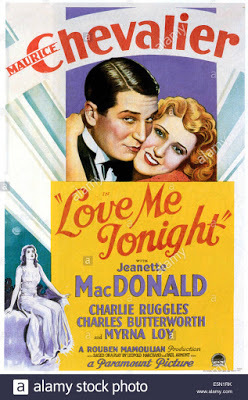
There was a time, soon after The Jazz Singer broke the sound barrier for motion pictures, when movie musicals were all the rage. Every studio wanted to make flicks that could boast “all talking-all singing-all dancing.” (Singin’ in the Rain, the Golden Age musical from 1952, captures the frenzied efforts of that earlier era to capitalize on early sound technology. This Gene Kelly vehicle exaggerates for comic effect the challenge posed by sound, but not all that much. Yes, early microphones were large and cumbersome; soundstages were overheated to the point of feeling like saunas; many popular stars of the silent era simply didn’t know how to talk, or sing, in an appealing way.)
I was highly fortunate, back in 1982, to interview a pioneer of motion picture sound. We met in the Hollywood Hills in a villa-like home that was crawling with cats. Rouben Mamoulian, an Armenian from Tibilisi, Georgia, came to America in 1922 to direct theatre and opera. He directed the original Porgy on Broadway, then was sought out by Hollywood in 1929. His Applause, a backstage drama shot that same year, was a landmark early talkie, praised by film historians for its innovation use of camera and sound. Later Mamoulian went on to shoot such films as the Frederic March version of Doctor Jekyll and Mr. Hyde (1931), as well as Queen Christina with Greta Garbo and Golden Boy with William Holden and Barbara Stanwyck. He also returned to Broadway to stage the Gershwins’ Porgy and Bess, and spent much of the 1940s helming innovative stage musical hits: Oklahoma!, Carousel, and Lost in the Stars.
Late in his career, Mamoulian had some notable Hollywood disasters: he was fired from the Technicolor film adaptation of Porgy and Bess after shooting only one scene, and later resigned from the notorious Elizabeth Taylor-Richard Burton Cleopatra. His very last complete film, shot in 1957 when he was sixty years old, was another musical, Silk Stockings. Starring Fred Astaire and Cyd Charisse, it was a Technicolor version of the 1937 Garbo comedy, Ninotchka.
But I want to focus here on Mamoulian’s interaction with two of Broadway’s favorite sons, the musical team of Richard Rodgers and Lorenz Hart. Rodgers and Hart, who started out writing comic songs for the undergrads of Columbia University, became the toasts of the Great White Way via a long string of sparkling musical entertainments, with Rodgers responsible for music and Hart supplying the witty lyrics. Their plots tended to be forgettable, but they contributed to the Great American Songbook such tunes as “(I’ll Take) Manhattan,” “Mountain Greenery,” “Where or When,” “My Funny Valentine,” and “The Lady is a Tramp.” Their most famous show, Pal Joey, eventually became a Frank Sinatra musical that incorporated several of the Rodgers and Hart standards written for earlier shows, changed the cold-hearted Joey from a dancer to a singer, and redeemed him to create a happy ending.
Pal Joey was filmed in 1967, seventeen years after the play surfaced on Broadway and long after Hart’s death. But a younger Rodgers and Hart had been brought out to Hollywood circa 1932 to provide music for a Maurice Chevalier vehicle, Love Me Tonight, in which a romantically-inclined tailor falls in love with a princess (Jeanette MacDonald). The opening song, “Isn’t it Romantic?”, was brilliantly staged by Mamoulian to take advantage of what a motion picture camera and sound equipment can do. The song begins with Chevalier in his tailor shop, then moves outdoors to cover the quaint locale and its citizens, before finally ending up on the lips of princess Jeanette. Isn’t it inventive?
Published on March 28, 2019 12:27
March 26, 2019
20th Century Fox: Hail and Farewell
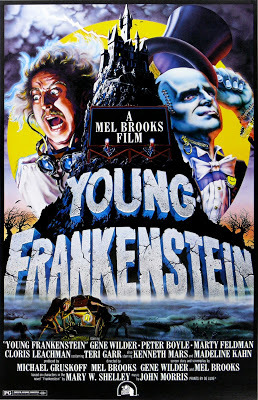
It’s hard to explain to anyone who didn’t grow up in my neighborhood how I feel about Disney’s acquisition of 20th Century Fox studios. My home base from kindergarten through the time of my marriage was just south of the Beverly Hills border and less than a mile from the Pico Blvd. entrance to 20th Century Fox. It was always exciting to know that while I went about the business of being a kid, the glamorous folk were making movies not far away. Fox never went in for big public tours like Universal Studios, which eventually parlayed its Studio City back lot into a major theme park. So what went on inside the 20th Century Fox gates was mysterious, and therefore delightful. There was a time that a distant relative with showbiz connections promised my family a private tour of the Fox lot. Of course I was thrilled. And of course I dressed carefully for the occasion, half-convinced that some important so-and-so would stop our group and tell me I was just the girl he needed to feature in his upcoming production. (And of course, nothing of the sort happened. Which is the only thing I remember about that tour today.)
At various times, Fox was the home of Tyrone Power, Carmen Miranda, Henry Fonda, Betty Grable, and Sonja Henie. During the Depression, it was bankrolled by the success of Little Miss Shirley Temple. It’s where, in 1962, Marilyn Monroe was fired from her last film, Something’s Got to Give, and where (just one year later), the cost overruns on Elizabeth Taylor’s Cleopatra almost threw the studio into bankruptcy. That’s why Fox sold off its fabled backlot, which became a massive business and shopping destination known as Century City. Fox did slightly better in the late Sixties, thanks to an unexpected blockbuster, Planet of the Apes. For me a special film of that era was Hello, Dolly!, the film version of the blockbuster stage musical. At a time when Hollywood’s philosophy was “bigger is better,” Fox brought in Gene Kelly to direct and cast young Barbra Streisand in a role that had been immortalized on Broadway by Carol Channing. Huge stretches of studio façade were turned into a so-called New York Street, with a turn-of-the-century brownstone look. For a massive parade scene, to provide a fitting backdrop for Streisand singing “Before the Parade Passes By,” the studio wanted literally thousands of extras. That’s why half of my neighborhood was recruited—including my mother, sister, and future mother-in-law—while my husband strutted proudly with the UCLA marching band.
I myself spent time in a Fox soundstage when researching the TV show M*A*S*H for Theatre Crafts magazine. (Today dozens of shows, including The Simpsons, use Fox facilities for their production needs.) I’ve also attended many a screening in one of the studio’s plush auditoriums. And I visit the Fox lot from time to time as an invited speaker for the Storyboard Development Group,where aspiring screenwriters analyze and argue over the scripts of upcoming Hollywood releases. It’s always fun to see, on the sides of Fox buildings, the huge murals that pay tribute to the hits of days gone by: Star Wars, The Sound of Music, Young Frankenstein.
I’ve just read that in selling their artistic empire to Disney, the Murdoch family (hardly my favorite moguls) are holding fast to the Fox lot. For them it’s a business decision, not a nostalgic one, as an article in the L.A.Times makes clear. I just hope the lot remains a place where I can dream about Hollywood past, present, and future.
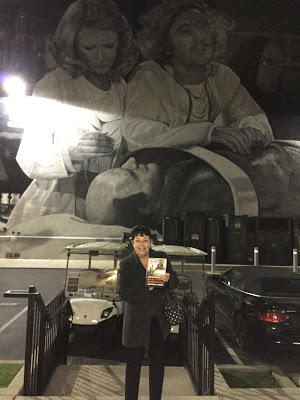 Here I am on the lot, with the cast of Young Frankenstein looming large behind me.
Here I am on the lot, with the cast of Young Frankenstein looming large behind me.
Published on March 26, 2019 13:34
Beverly in Movieland
I write twice weekly, covering topics relating to movies, moviemaking, and growing up Hollywood-adjacent. I believe that movies can change lives, and I'm always happy to hear from readers who'd like t
I write twice weekly, covering topics relating to movies, moviemaking, and growing up Hollywood-adjacent. I believe that movies can change lives, and I'm always happy to hear from readers who'd like to discuss that point.
...more
- Beverly Gray's profile
- 10 followers



